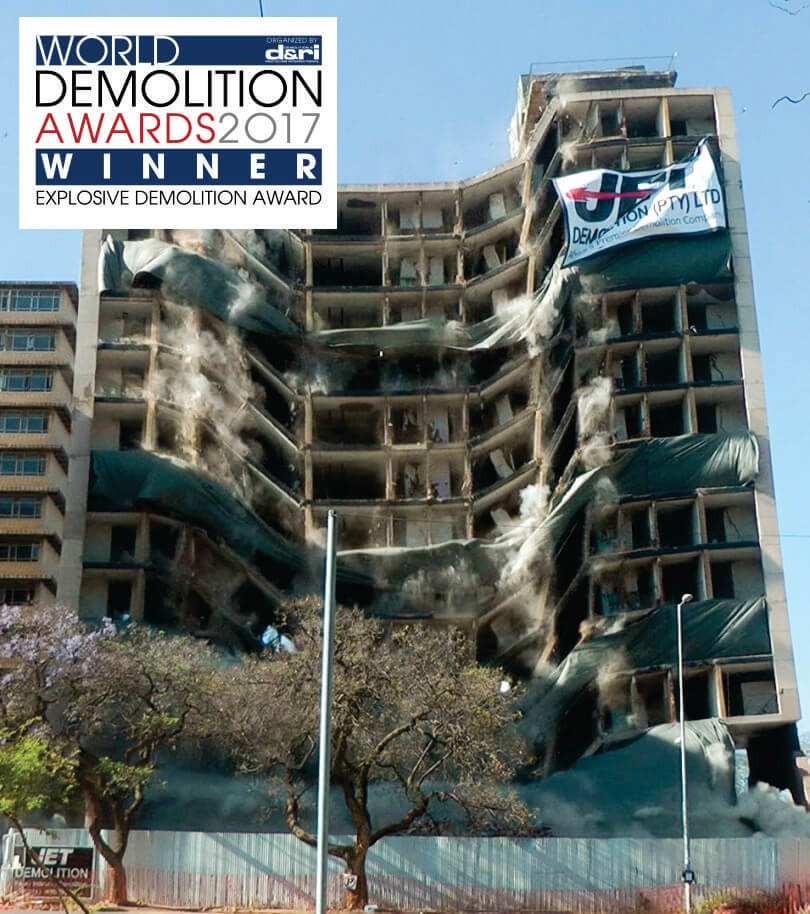Our World Demolition Awards.
Jet Demolition is honored to have received multiple international awards, most notably crowned as Industry’s “Best of the Best” when awarded the coveted World Demolition Award in 2020. The awards recognize excellence, best practice and innovation, as determined by an international judging panel of leading industry experts.
2020 – Award – Best of the Best
A towering landmark in central Johannesburg, the Bank of Lisbon Building succumbed to a raging fire in September 2018. Three firemen tragically died while battling the fire raging for 3 days in the upper half of the building. The building was structurally compromised due to the extensive fire-damage, and subsequently condemned.
Jet Demolition was appointed to undertake the controlled implosion of the building, situated within 7,8m of the closest neighboring structure. 920kg of explosive was used in 2363 holes, with the building rubble contained to within it’s own basement. This project secured Jet Demolition the coveted “Best of the Best” award at the 2020 World Demolition Awards, celebrating the best demolition project undertaken globally over the past year.
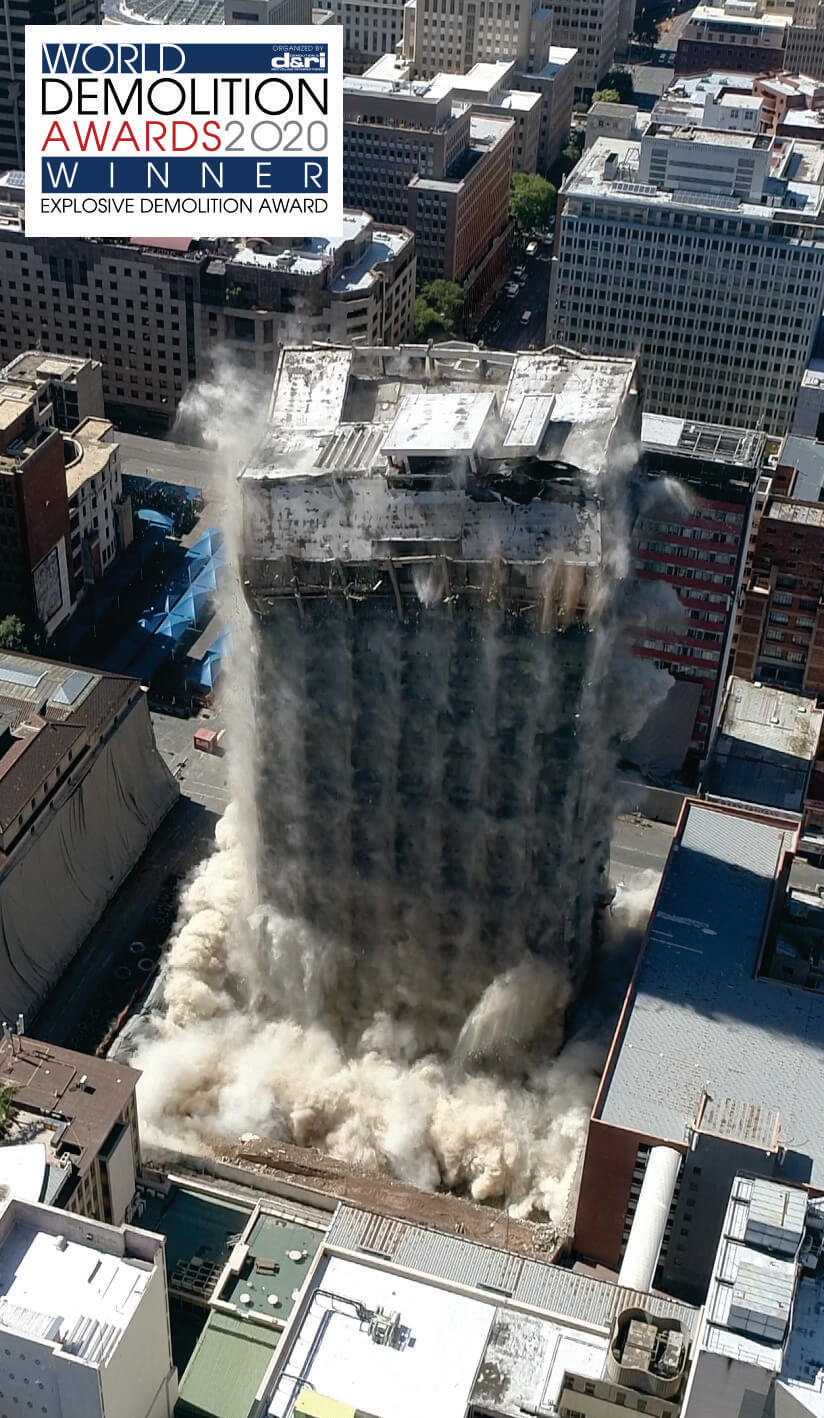
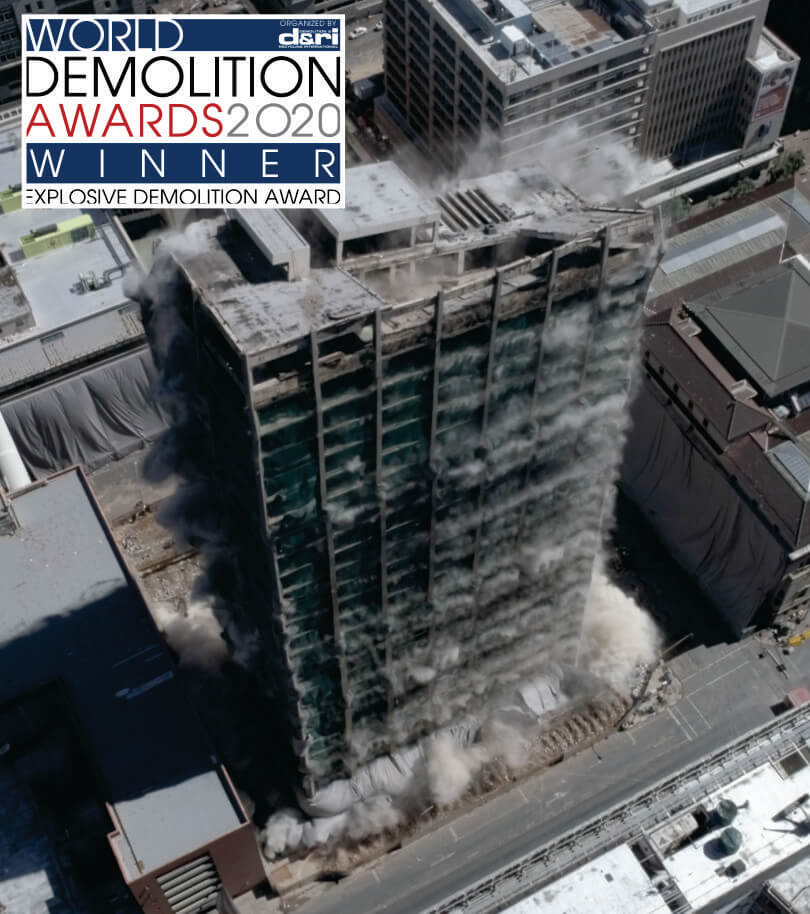
2020 – Explosive Demolition Award – Bank of Lisbon Building
The 108m tall fire-damaged Bank of Lisbon Building was situated within 8m of the closest neighboring building, within an extremely confined site footprint in Johannesburg. The fact that it was fire-damaged posed an incipient risk that had to be mitigated by stabilising the structure and installing an early-warning system to detect any movement, in addition to lateral support of the basement itself.
Jet Demolition opted to undertake the controlled implosion of the concrete-framed structure, in one of the most challenging projects ever undertaken by the company. The building was successfully and safely imploded on 24 November 2019, earning Jet Demolition the Explosive Demolition award in the 2020 World Demolition Awards.
2019 – Recycling and Environmental Award – Decontamination of Redundant Gold and Uranium Complexes
The safe decontamination and demolition of three gold and uranium complexes resulted in Jet Demolition winning its third consecutive award at the 2019 World Demolition Awards in the Recycling and Environmental category.
The vast majority of early metallurgical plants in South Africa recovered both gold and uranium. Throughout the lifecycle of these plants, spillages and accumulations resulted in widespread contamination of infrastructure.
The project involved reducing radiological contaminant levels to within public release limits. Jet Demolition was appointed to safely demolish all plant structures and carry out cleanup operations. Innovative methods and procedures were used to achieve high recycling rates and leave only a small quantity of radioactive material requiring expensive, long-term storage.
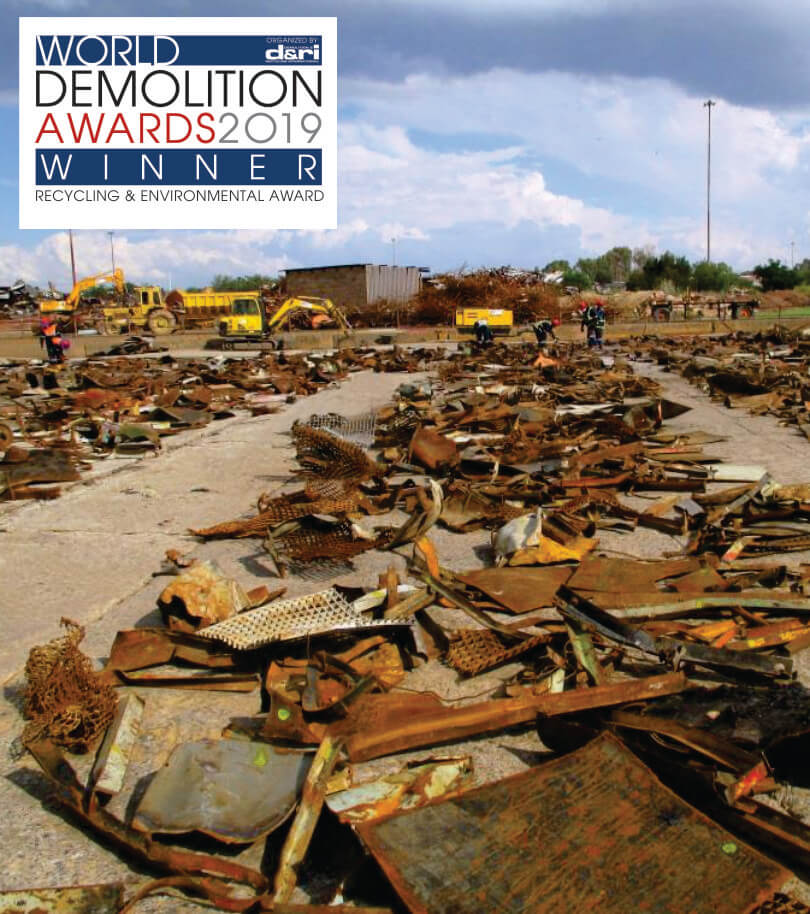
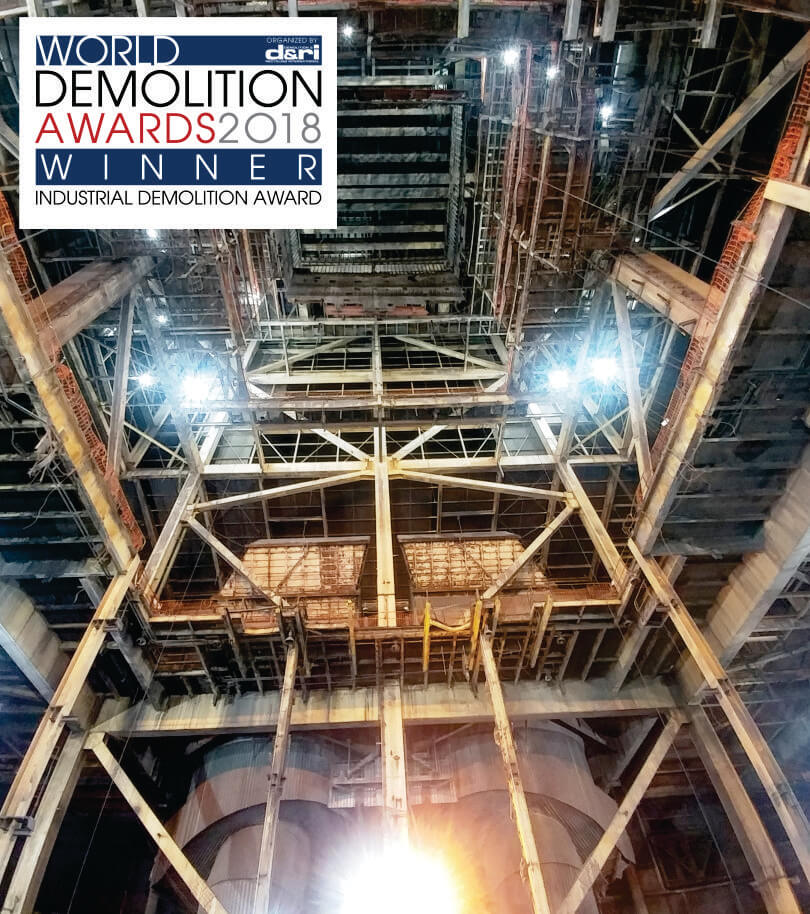
2018 – Industrial Demolition Award – Duvha Power Station
At the 2018 World Demolition Awards, Jet Demolition won the Industrial Demolition Award for the demolition of a coal-fired boiler and ancillary equipment at Duvha Power Station in Mpumalanga, following an over-pressurisation event.
The key requirements of the project was to ensure the safe, controlled and rapid removal of the damaged 600 MW boiler to facilitate later replacement. Preventing damage to the main support structure of the boiler house and its internal substructures was crucial, as their reuse was required for the rebuild.
This high-risk project involved the removal of critically compromised structures and was carried out over two 12-hour shifts a day, with the workforce peaking at 145.
2017 – Explosive Demolition Award – HG de Witt Building
Jet Demolition’s innovative implosion of the 14-storey HG de Witt Building in the bustling Pretoria Central Business District clinched it its first accolade at the World Demolition Awards in 2017. The project claimed the Explosive Demolition Award, and called for extensive, out-of-the-box thinking, with new techniques developed to ensure the safe execution of the works.
Situated on less than half an acre with the closest neighbouring building less than 500 mm away in a densely occupied urban environment, the building posed unique challenges. The successful implosion design and execution achieved the required results, with the collapse mechanism leading to the formation of a pancaked, pyramid-shaped rubble pile as required by the very tight site.
